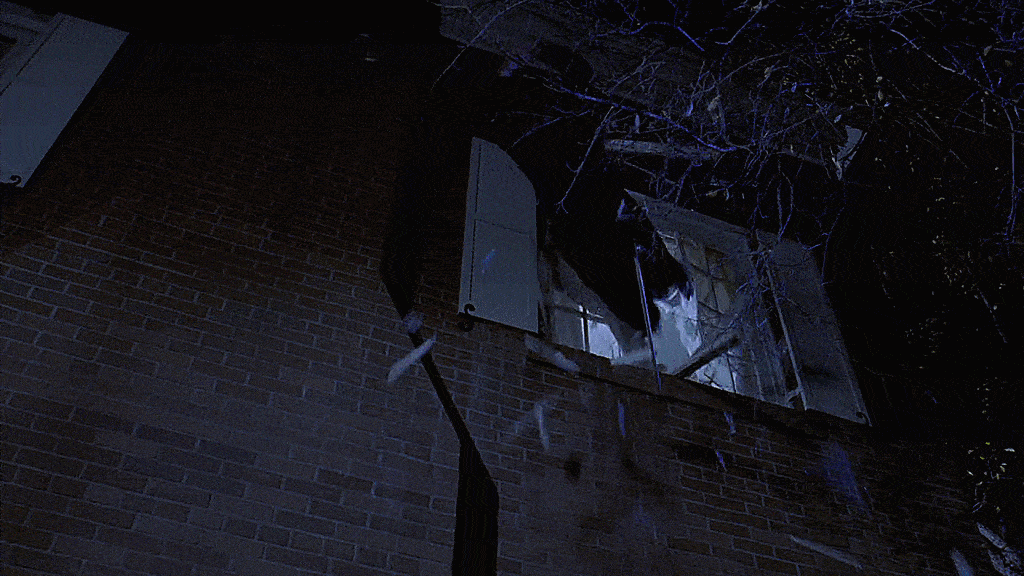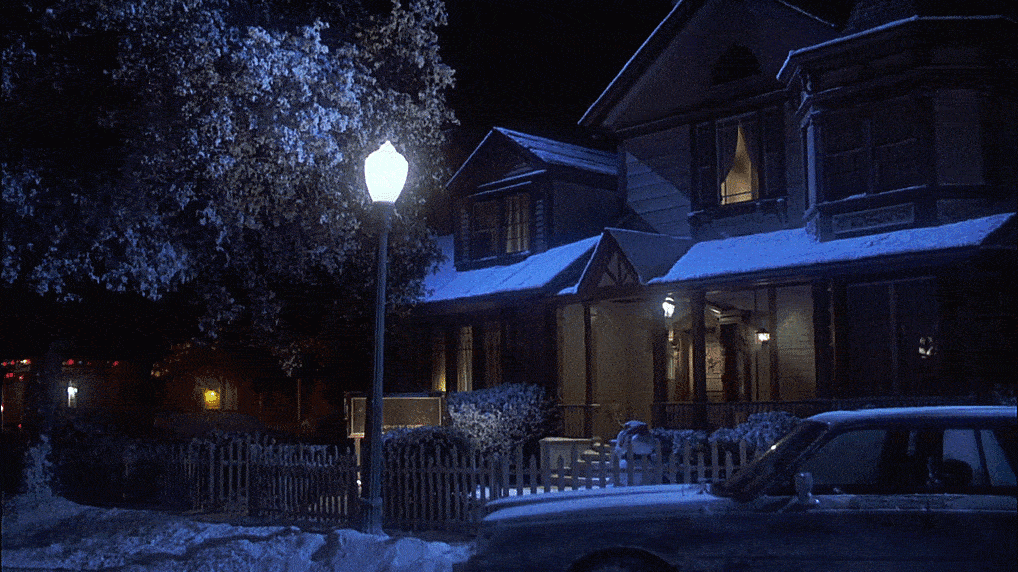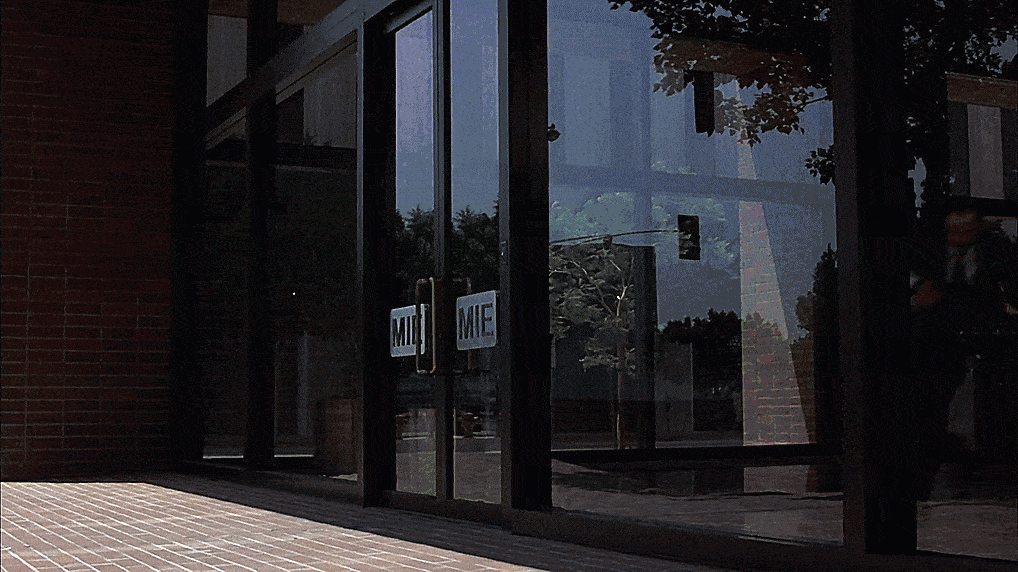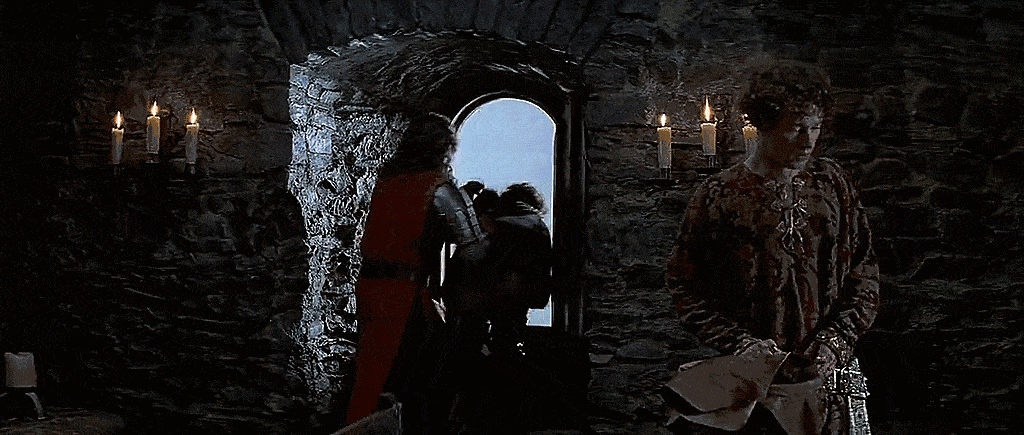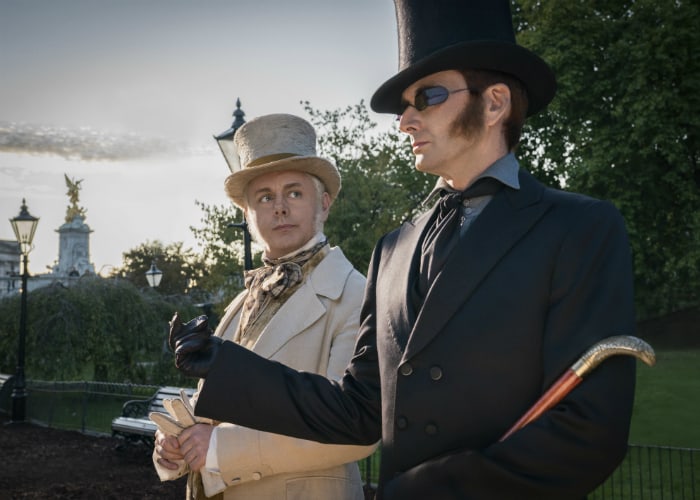Subscribe
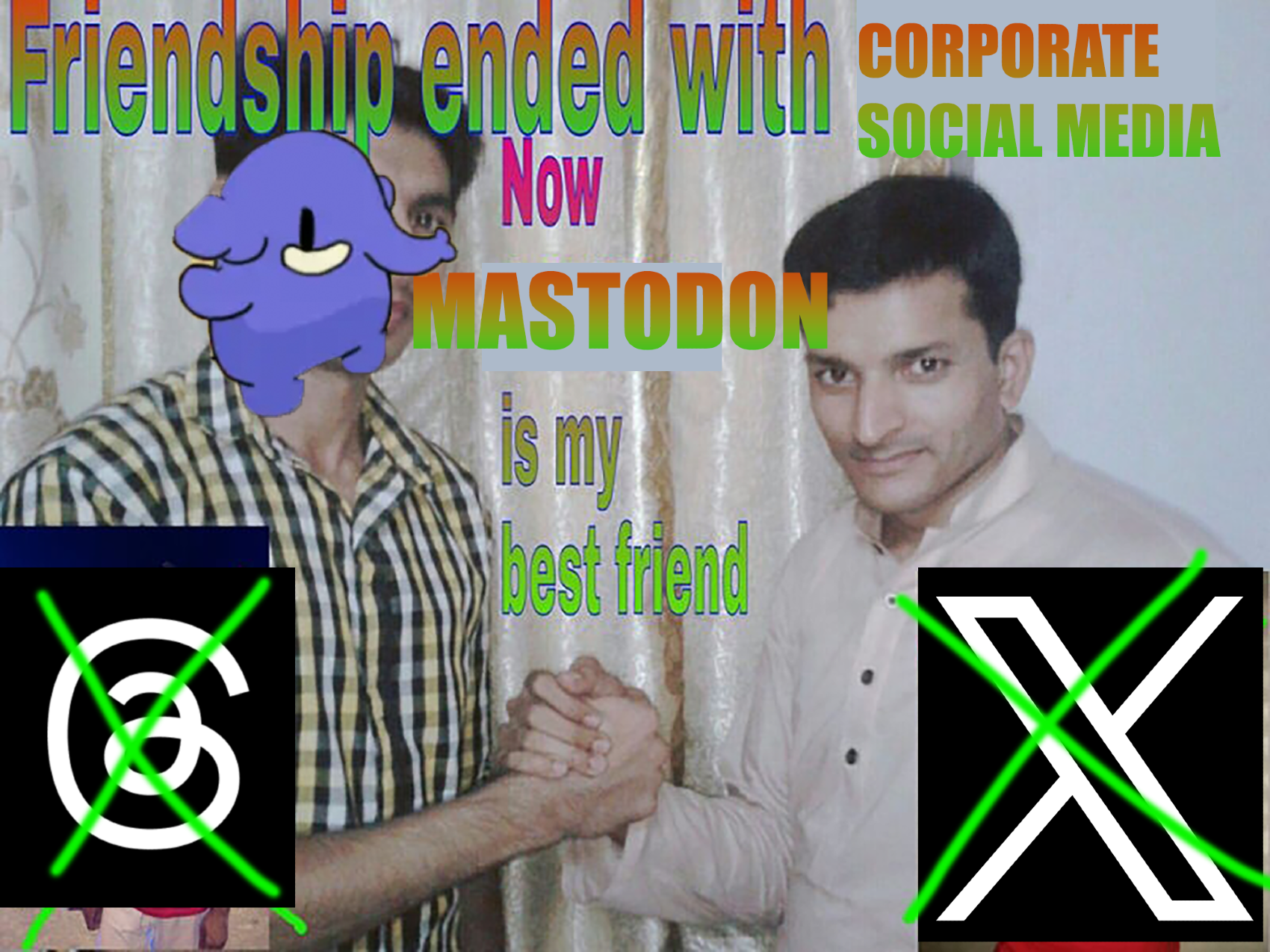
Earlier this week, friend of 404 Media Katie Notopoulos, who is a great journalist and internet knower, wrote an article for MIT Tech Review that you should read, called “How to fix the internet.” The article grapples with 40 years of internet history, Elon Musk, “hellsites,” AI, and disinformation. It ultimately comes to the conclusion that in order to fix the internet, we need to take more control of it using technologies like decentralization, social media federation, our own websites, and microcommunities.
I’m writing this mostly to cosign Notopoulos’s piece: we quit our jobs and left behind short term financial stability at a website that we did not own to create a website that we do own with the basic thesis that, in the long term, having total ownership and control over our business and our website will be better for us, our readers, and the media ecosystem. I’m on board. Her piece argues that social platforms are not going away, are not necessarily bad, and briefly touches on the pros and cons of different Twitter replacements:
As Notopoulos writes, the Fediverse is a better, more user-centric social media concept than the one we currently have, where you amass followers on a single platform then lose them if that platform dies or becomes bad and you decide to quit. Federated social media means that you create an account on a server, can follow people on that server and on other servers, and can move your account to other federated platforms or servers whenever you want.
This brings me to the point I would like to make: Mastodon is the good one.
I didn’t join Mastodon until after we launched 404 Media. I joined, frankly, because lots of people told me that we should. Mastodon had been decried by many (me, previously), as a social media platform that is too complicated or weird to sign up for. I had also convinced myself that people on Mastodon would be mad at me if I made jokes, which has (mostly) not been the case.
I’ve now been using it for about two months and I am here to tell you that it is, in principle, what we should want the internet to be. If you have been remotely interested in Mastodon but had reservations about joining because you thought it would be difficult, confusing, or otherwise annoying, it is not.
Here is how you make a Mastodon account: You go to this website. You agree to not share disinformation or be an asshole. You select a username and password. Then, you have a Mastodon account.
So, Mastodon:
- Not difficult to sign up for
- Not difficult to use
- Has an app like every other social media network
- Not owned by world’s richest man
- Not owned by a company whose main platform has been credibly accused of facilitating genocide by the United Nations
- Not funded by the guy who made the last place, which sold itself to the world’s richest man
- Doesn’t have a crypto thing going on
- Free and open source
- Administered by a crowdfunded nonprofit
- Decentralized, portable, and interoperable
I’m writing this because it has been weird to watch some journalists and people who are fully aware of Facebook’s catastrophic history with things like disinformation, algorithmic dark patterns and ever-shifting reward systems, user monetization and tracking, disastrous forays into the news business, shoddy content moderation, and complicity in a genocide become the world’s largest Mark Zuckerberg / Threads simps because he’s a little less awful than Elon Musk. These same people who are chit-chatting with Mark about his MMA are chastising their colleagues who choose to stay on “Xitter,” “the Bird Site,” “the hell site,” etc because their audience is there.
I think people are excited about Threads primarily because they believe it can scale better than other alternatives, as in, theoretically the people whose tweets they want to read will be there. Threads has definitely begun to feel more vibrant, and like an actual social media network and not just a place to ask if anyone is still using Threads. But this also means Threads evangelists are basically hoping that Zuckerberg will be successful enough to control yet another gigantic social media network, which isn't a terrible bet, but isn't necessarily good for society, either. I'll just say that I believe Mastodon can scale, has scaled, and can continue to scale particularly because of its decentralized nature (hundreds of millions of people have used BitTorrent, for example, which is about as hard to get started with as Mastodon is). Mastodon currently has about 1.7 million monthly active users.
Anyways, I am using Threads, and I will continue to use Threads, because I am a pragmatic person who wants to connect with readers wherever they are because my livelihood and my reporting relies on it. If Threads "wins," I will submit and use it daily, probably for the rest of my career. Right now, I feel like my brain is falling out of my skull at all times because in order to spread the articles we publish on this upstart website, I need to think about the slightly different ways in which I will share it on Twitter, Mastodon, Threads, Instagram, LinkedIn, BlueSky, TikTok, etc. All things considered, I’d like to pick one and stay there, but that will result in fewer people reading our work and not meeting our readers wherever they are, which isn’t a smart move at this juncture. So, I’ll keep using Threads, but I will not become an evangelist for one of the biggest companies in the world because it is slightly less bad than the alternative, when an actually moral alternative with none of that baggage exists.
It would be good for the internet if Threads were to actually federate itself, but, for now, I will just point out that Threads is still not interoperable with the continent of Europe for reasons of “it’s illegal there because of Facebook’s privacy practices”
It is possible to make Mastodon complicated, because it’s highly customizable. But you don’t have to make it complicated, and you can even make it look like Twitter. Here’s how you do that: You go to www.elk.zone and you log in. That’s all.
One of the most compelling things about Mastodon, and something Notopoulos brings up in her piece, is the fact that it’s portable.
Meta claims that Threads will eventually become federated, meaning that it, too, will allow you to take your followers and port them elsewhere, and that it will possibly become interoperable with Mastodon at some point. There are reasons to be skeptical of this actually happening, which have been explained much better by other people but largely have to do with the fact that Facebook likes to monetize its users and strives for social media monopolization. I believe it would be very good for the internet if Threads were to earnestly and actually federate itself, but, for now, I will just point out that Threads is still not interoperable with the continent of Europe for reasons of “it’s illegal there because of Facebook’s privacy practices” and thus I’m not holding my breath.
If you are at all worried about how complicated Mastodon is or can be, you can ignore this part, join Mastodon.Social, and never think about the rest of this article. Anyways, portability is good and important because, let’s say that hypothetically Mastodon.Social were to be taken over by some maniac billionaire. I could choose to take my account and port it somewhere else, and bring my followers with me. What a concept!
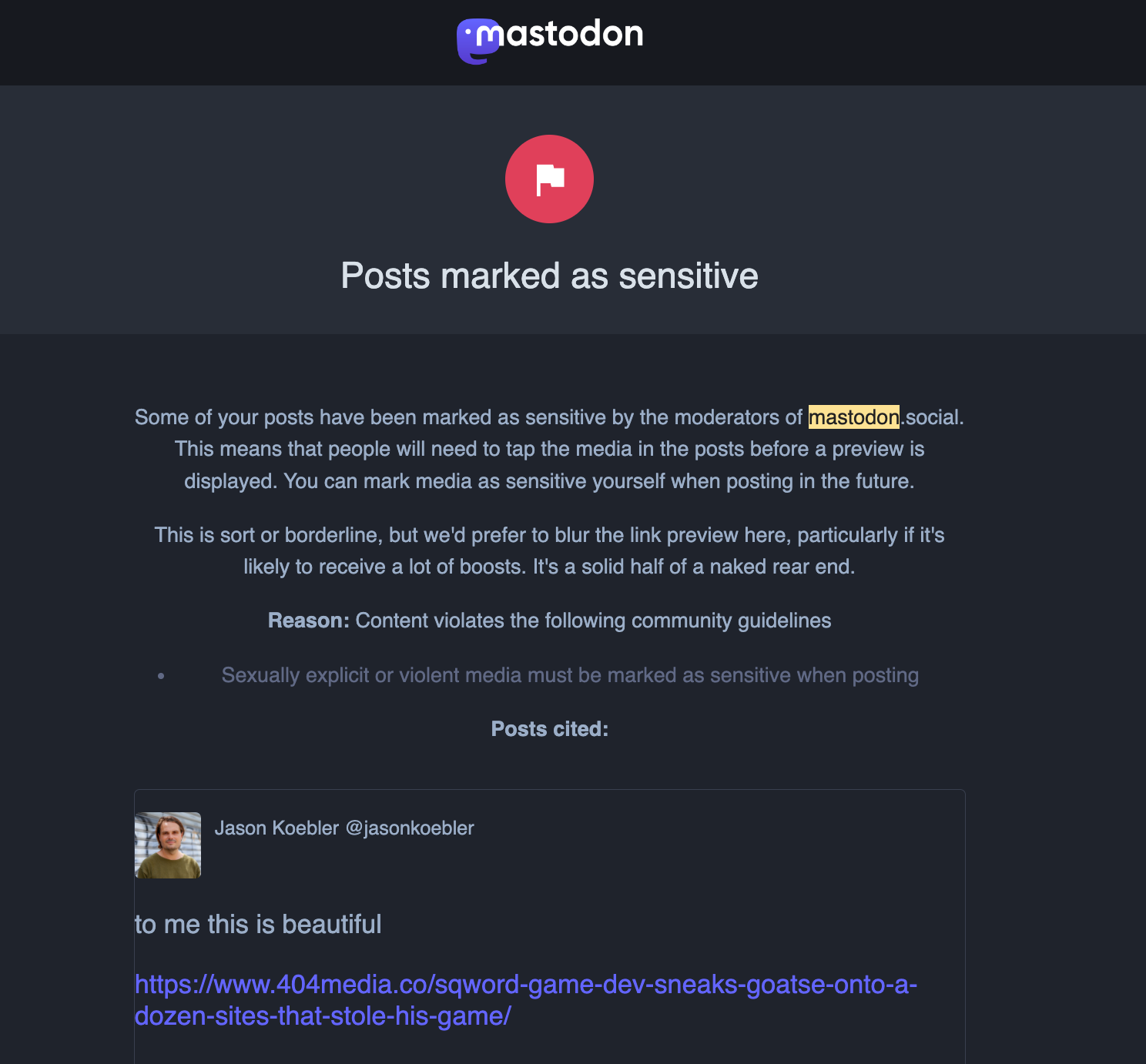
To make this more concrete: Earlier this week, I wrote an article about goatse, which is objectively a graphic image. I chose to very tastefully crop the top image to NOT include the man’s gaping rectum. I posted a link to the article on Mastodon. People started sharing it. Most people did not seem to have an issue with this, but someone suggested I add a content warning. I did not, because I did not feel it was graphic.
A moderator eventually reviewed it and sent me the following message: “Some of your posts have been marked as sensitive by the moderators of mastodon.social. This means that people will need to tap the media in the posts before a preview is displayed. You can mark media as sensitive yourself when posting in the future. This is sort or borderline, but we'd prefer to blur the link preview here, particularly if it's likely to receive a lot of boosts. It's a solid half of a naked rear end.”
First of all let me state for the record: I disagree with the moderator’s decision. Second of all: WOW!!!!!!!!!!!!!!!!!!!!!!!! (!!!!!)(!!!)!!!!: This is, actually, an incredible message the likes of which I do not think I have ever gotten from a social media platform. It is nuanced, well-reasoned, and reasonable. It is the type of moderation you get from a GOOD moderator on a GOOD community forum, and sometimes in the best subreddits. Unlike Reddit moderators, however, Mastodon.Social’s moderators are paid. Third of all: I am going to move on with my life. But let’s say that I didn’t want to, and wanted to die on this goatse hill. I could simply take my Mastodon account, put it on another server that appreciates goatse, and continue posting goatse there until the end of time. I would keep all of my posts and all of my followers. It's a good site.




